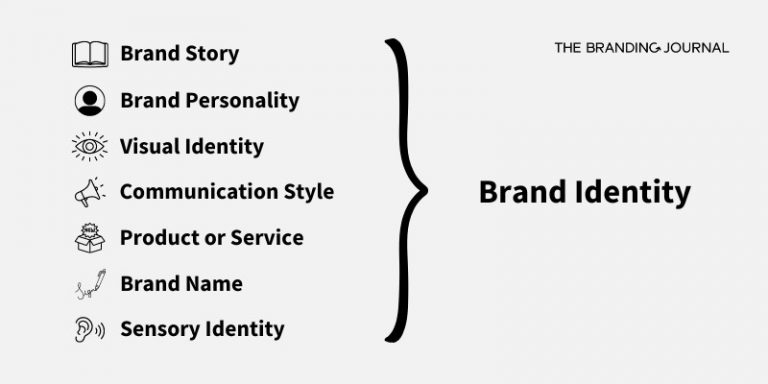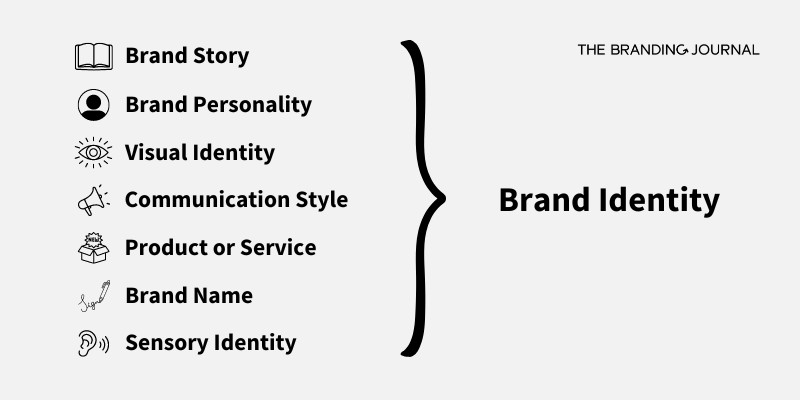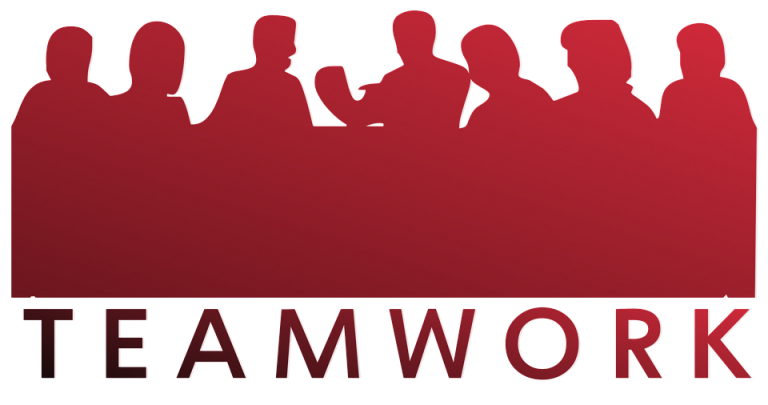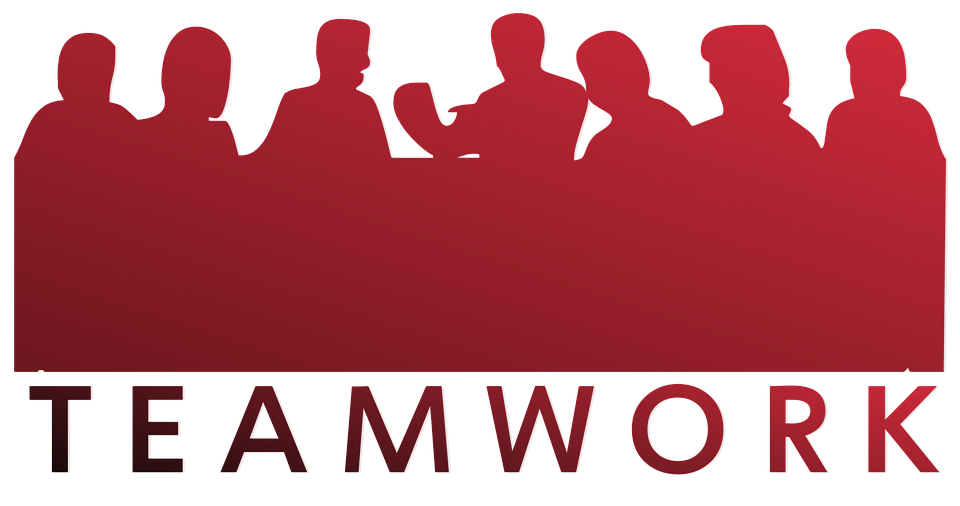Good health scriptures set the stage for this enthralling narrative, offering readers a glimpse into a story that is rich in detail and brimming with originality from the outset.
Exploring the significance of health in various religious texts unveils a treasure trove of wisdom, guiding individuals through spiritual and physical wellness. From ancient scriptures to contemporary interpretations, these texts shine a light on holistic health practices, mental well-being, and the profound connection between community and health.
Importance of Good Health in Scriptures
The significance of good health is a recurring theme across various religious texts, emphasizing the holistic well-being of individuals. Many scriptures not only advocate for physical wellness but also intertwine it with spiritual and moral fortitude. Good health, therefore, is seen as a vital component of leading a fulfilling and righteous life, encouraging followers to take care of their bodies as a form of respect for creation.Health is portrayed differently across cultures and religious beliefs, with each tradition offering unique insights into the interplay of physical and spiritual wellness.
For instance, in the Bible, the concept of health extends beyond mere absence of illness, representing a state of wholeness and peace. Similarly, in the Quran, health is regarded as a blessing that should be cherished and maintained through righteous living. Various scriptures prompt followers to engage in practices that promote health, including dietary laws, physical activity, and mental tranquility, reinforcing the idea that good health is a divine command and a pathway to spiritual enlightenment.
Interpretation of Health in Different Cultures
Different cultures interpret health through their scriptures, creating a varied landscape of beliefs and practices surrounding wellness. Each tradition contributes to a rich mosaic of understanding that emphasizes the connections between the physical, mental, and spiritual dimensions of health.
- In Hinduism, scriptures like the Bhagavad Gita advocate for a balanced lifestyle, promoting yoga and meditation as means to achieve physical and mental health.
- Buddhism emphasizes the Four Noble Truths, which highlight the importance of understanding suffering and the path to enlightenment through a healthy way of living.
- Ancient Chinese texts, such as the Tao Te Ching, focus on harmony with nature and the body, advocating for practices like Tai Chi and Qi Gong to promote health and longevity.
These diverse interpretations underscore the universal recognition of health as integral to the human experience, each culture weaving its unique beliefs into the broader understanding of well-being.
Spiritual Benefits Associated with Good Health
Good health is often linked to spiritual benefits in various scriptures, illustrating the profound impact that physical wellness can have on one’s spiritual journey. Many texts articulate that maintaining good health not only enhances one’s quality of life but also deepens one’s connection with the divine.
- Spiritual clarity is often cited as a benefit of good health, with scriptures suggesting that a healthy body fosters a clear mind for meditation and prayer.
- The practice of caring for one’s health is seen as a form of gratitude towards the divine, promoting a sense of purpose and alignment with spiritual values.
- Good health is frequently viewed as a means to serve others better, as individuals who are physically able can contribute more actively to their communities and fulfill their spiritual obligations.
In summary, the scriptures across different cultures illuminate the significance of good health not merely as a physical state but as a pivotal element that supports and enhances spiritual growth, enabling individuals to live fuller, more purposeful lives.
Key Scriptures Promoting Good Health
The importance of good health is echoed throughout various religious texts, which not only encourage physical well-being but also promote spiritual and emotional health. Many believers find guidance in these scriptures, which serve as reminders of the sanctity of the body and the lifestyle choices that honor it. Understanding these key verses can inspire individuals to adopt healthier practices in their daily lives.In examining these scriptures, it’s essential to consider the context in which they were written.
Many texts address health issues faced by communities at the time, offering timeless wisdom that transcends generations. Below is a selection of significant verses that underscore the value of health and wellness.
Prominent Health Scriptures
These selected verses emphasize the relationship between faith and health, illustrating how spiritual teachings can influence physical well-being.
- 1 Corinthians 6:19-20: “Do you not know that your bodies are temples of the Holy Spirit, who is in you, whom you have received from God? You are not your own; you were bought at a price. Therefore honor God with your bodies.”
This verse highlights the importance of caring for one’s body as a sacred duty, encouraging believers to make health-conscious decisions.
- Proverbs 3:7-8: “Do not be wise in your own eyes; fear the Lord and shun evil. This will bring health to your body and nourishment to your bones.”
This scripture connects spiritual wisdom and moral living with physical health, suggesting that ethical choices lead to wellness.
- Exodus 15:26: “He said, ‘If you listen carefully to the Lord your God and do what is right in his eyes, if you pay attention to his commands and keep all his decrees, I will not bring on you any of the diseases I brought on the Egyptians, for I am the Lord, who heals you.'”
This passage indicates a divine promise of health that comes with obedience, reinforcing the idea that spiritual fidelity can lead to physical health.
- 3 John 1:2: “Dear friend, I pray that you may enjoy good health and that all may go well with you, even as your soul is getting along well.”
This verse encapsulates the holistic approach to health, recognizing the interconnectedness of physical, emotional, and spiritual well-being.
- Psalm 147:3: “He heals the brokenhearted and binds up their wounds.”
This verse reflects the importance of mental health, illustrating that emotional healing is as vital as physical health.
The verses above not only promote physical health but also emphasize the holistic nature of wellness as interconnected with spiritual and emotional well-being. They remind believers that maintaining good health is an essential aspect of honoring one’s faith and fulfilling one’s purpose in life. The contexts of these scriptures—from communal health crises to personal spiritual journeys—further enhance their relevance, guiding believers in their daily choices and overall lifestyle.
Practices for Maintaining Good Health from Scriptures
In various religious texts, the importance of maintaining good health is frequently emphasized. These scriptures provide guidelines that not only focus on spiritual well-being but also underscore the significance of physical health. Engaging in specific practices derived from these texts can greatly contribute to our overall health and wellness.The practices encouraged by scriptures that promote physical health are diverse and incorporate dietary guidelines along with lifestyle recommendations.
Many religious traditions emphasize moderation, mindfulness, and the consumption of wholesome foods, all of which play a critical role in maintaining good health. Here are some key practices highlighted in various scriptures:
Dietary Guidelines from Religious Texts
Dietary practices found in religious texts are often aimed at promoting good health through balance and moderation. For instance, many scriptures suggest the consumption of natural, unprocessed foods. The following points Artikel significant dietary guidelines across different religions:
- Vegetarianism in Hinduism: Many Hindus practice vegetarianism, motivated by the principle of ahimsa (non-violence), which promotes compassion towards all living beings. A diet rich in fruits, vegetables, and legumes is encouraged.
- Kosher Laws in Judaism: Jewish dietary laws dictate the types of food that are permissible (kosher), emphasizing cleanliness and the humane treatment of animals. This includes avoiding certain meats and the combination of dairy and meat.
- Halal Guidelines in Islam: Islamic dietary laws dictate what is permissible to eat (halal). This includes abstaining from pork and alcohol, promoting the consumption of wholesome and ethically sourced foods.
- Christian Emphasis on Moderation: Many Christian denominations advocate for moderation in food consumption, encouraging followers to avoid gluttony and to partake of food mindfully and with gratitude.
Spiritual and Physical Health Practices Across Different Religions
Practices that enhance both spiritual and physical health often intersect in various religious traditions. The following table encapsulates a comparison of these practices across different faiths:
| Religion | Spiritual Practices | Physical Health Practices |
|---|---|---|
| Hinduism | Meditation and Yoga for spiritual growth | Vegetarian diet, fasting for detoxification |
| Judaism | Prayer and study of Torah | Kosher dietary laws, regular physical activity on Shabbat |
| Islam | Daily prayers (Salah) for discipline | Halal eating, fasting during Ramadan for self-control |
| Christianity | Prayer and community fellowship | Moderate eating habits, emphasis on rest and Sabbath |
“A healthy mind in a healthy body.”
These practices not only enhance physical health but also foster a deeper connection to spiritual beliefs, forming a holistic approach to well-being. By integrating these practices into daily life, individuals can work towards achieving a balanced state of health as encouraged by their respective scriptures.
Mental Well-being in Relation to Scriptures
The significance of mental health and emotional well-being in the context of scriptures cannot be overstated. Many sacred texts provide profound insights and guidance on how to achieve and maintain a peaceful mind and a balanced emotional state. They emphasize the importance of mental well-being as a component of overall health, reflecting the interconnectedness of body, mind, and spirit.Scriptures address mental health in various ways, offering wisdom that encourages individuals to seek peace and healing for their minds and emotions.
This can be seen through verses that advocate for trust, surrender, and mindfulness, all of which contribute to reducing anxiety and promoting mental clarity. Passages from the scriptures often remind believers to focus on positive thoughts, to cast their worries onto a higher power, and to embrace a spirit of gratitude.
Prayers and Meditations for Mental Peace
Various prayers and meditations found in scriptures serve to promote mental peace and emotional resilience. These practices are essential for fostering a serene mind and can be integrated into daily routines for enhanced mental well-being.
The Serenity Prayer
A widely recognized prayer that emphasizes acceptance, courage, and wisdom. It encourages individuals to accept what they cannot change, to have the courage to change what they can, and to know the difference.
Philippians 4
6-7 : This passage advises believers to not be anxious but to present their requests to God through prayer and petition. The promise of peace that surpasses all understanding is a strong affirmation of the protective power of prayer in mental health.
Psalm 46
10 : The scripture states, “Be still, and know that I am God.” This encourages a state of mindfulness and stillness, allowing individuals to connect with their inner peace.
Meditation on Loving-Kindness
A practice encouraged in many spiritual traditions, including those referenced in scriptures. It involves sending thoughts of love and compassion to oneself and others, fostering emotional wellness and connection.
The Relationship Between Faith and Mental Health Support
Faith plays a crucial role in providing support for mental health as described in various scriptures. Individuals often find strength and solace in their beliefs, which can mitigate feelings of loneliness, anxiety, and despair. The following points illustrate this relationship:
Community Support
Many scriptures highlight the importance of community and fellowship, suggesting that supportive relationships contribute to mental wellness. Engaging with a faith community can provide emotional support and a sense of belonging.
Hope and Resilience
Faith offers hope, which is essential for resilience in the face of adversity. Scriptures often remind individuals that they are not alone in their struggles, fostering an attitude of resilience against mental health challenges.
Spiritual Practices
Regular spiritual practices such as prayer, meditation, and reading of sacred texts can help individuals manage stress and anxiety. These practices encourage reflection and provide comfort during turbulent times.
Emotional Regulation
Scriptures often teach principles such as forgiveness, compassion, and gratitude, which are vital for emotional regulation. Adopting these principles can lead to a healthier emotional response to life’s challenges.
“Trust in the Lord with all your heart and lean not on your own understanding.”
Proverbs 3
5
Holistic Approaches to Health in Scriptures
In various religious texts, the concept of holistic health is presented as an interconnected system that emphasizes the balance of physical, mental, and spiritual well-being. This integrated perspective reinforces the understanding that health is not merely the absence of disease but a harmonious state of being that encompasses all aspects of life. Scriptures highlight that nurturing one’s body, mind, and spirit leads to a more fulfilling and purposeful existence.The intertwining of physical, mental, and spiritual health is a recurring theme across many religious traditions.
For example, in Christianity, the Bible emphasizes the importance of caring for one’s body as the temple of the Holy Spirit (1 Corinthians 6:19-20), which suggests a physical aspect of health intertwined with spiritual significance. Similarly, in Hinduism, the concept of ‘Ayurveda’ promotes a holistic approach where physical health is linked to mental clarity and spiritual growth, advocating for a balanced lifestyle that includes diet, meditation, and ethical living.
Comparative Analysis of Holistic Health Perspectives from Different Religious Traditions
Examining the holistic health perspectives of various religious traditions offers rich insights into how physical, mental, and spiritual aspects are valued. These similarities and differences can guide individuals seeking a comprehensive approach to health.
Christianity
Emphasizes the body as a temple, promoting stewardship of one’s health through physical activity, proper diet, and spiritual practices like prayer. The integration of faith with health leads to both physical vitality and spiritual growth.
Islam
Encourages a balanced lifestyle, where physical health is maintained through practices like fasting during Ramadan, which is seen as a means of purifying the body and soul. The concept of ‘Nafs’ (self) highlights the importance of managing desires for mental and spiritual well-being.
Buddhism
Focuses on mindfulness and meditation as essential practices for mental clarity and spiritual insight. The teachings encourage a diet that supports health, as well as physical exercises like yoga, to cultivate both body and mind.
Hinduism
Promotes the idea of ‘Sattva’ (purity) in lifestyle choices, emphasizing the importance of a balanced diet, meditation, and moral living. The interconnectedness of mind, body, and spirit is central to achieving overall wellness.
Judaism
Stresses the concept of ‘Shalom’ (peace), which encompasses physical health, emotional wellbeing, and spiritual fulfillment. Dietary laws (Kashrut) and the importance of community and family time contribute to holistic health.A comparative analysis reveals that while each tradition has unique teachings, they universally advocate for a holistic approach to health that integrates physical actions, mental attitudes, and spiritual beliefs. This comprehensive perspective serves as a guide for individuals aiming to cultivate well-being across all facets of their lives.
Community and Health in Religious Texts
Religious texts often emphasize the importance of community in fostering health and well-being. These scriptures offer a vision of collective responsibility, where the health of each individual is seen as interconnected with the health of the community. This perspective encourages believers to engage in practices that promote not only their own health but also the health of those around them.The role of community in promoting health is prominently featured in various scriptures.
They advocate for mutual support, shared resources, and communal rituals that enhance physical, mental, and spiritual well-being. Through these texts, it becomes clear that a healthy community is foundational for individual health, and vice versa.
Communal Practices for Health and Well-being
Scriptures advocate for various communal practices that contribute to the overall health and well-being of individuals. These practices encourage a sense of belonging and mutual care, which are vital for mental and emotional health. Some social activities mentioned in religious texts that foster good health include:
-
Gathering for communal prayers or worship services, which reinforces social bonds and provides spiritual nourishment.
- Sharing meals during religious festivals or communal gatherings, promoting nutrition and fellowship.
- Participating in community service or charitable acts, which boosts mental health and provides a sense of purpose.
- Engaging in group meditation or mindfulness practices that enhance mental clarity and reduce stress.
- Organizing health workshops or classes within the community, focusing on physical wellness and preventive care.
Role of Prayer and Meditation in Health
Prayer and meditation hold significant roles in various religious traditions, often linked with physical, mental, and emotional health benefits. Scriptures highlight the transformative power of these spiritual practices, illustrating how they foster a deeper connection with the divine and promote overall well-being. Engaging in prayer and meditation not only aids in spiritual growth but also enhances resilience against stress and supports healing processes within the body and mind.Research and anecdotal evidence suggest that prayer and meditation can lead to lower blood pressure, reduced anxiety, and improved emotional health.
For instance, many individuals report feelings of peace and clarity after dedicating time to prayer, while others find that meditation helps them manage chronic pain or anxiety disorders. One notable testimonial comes from a cancer survivor who shared how daily meditation and prayer significantly contributed to her mental strength during treatment, allowing her to approach her healing journey with optimism and hope.
Meditation Techniques in Religious Texts
Several meditation techniques are documented in religious texts, each offering unique approaches to achieve mental tranquility and spiritual connection. Here are some notable techniques that illustrate the variety of practices across different traditions:
- Mindfulness Meditation: Rooted in Buddhist teachings, this practice encourages individuals to focus on the present moment, observing thoughts and sensations without judgment. It promotes emotional regulation and reduces stress.
- Mantra Meditation: Common in Hinduism and Buddhism, this involves repeating specific phrases or sounds to center the mind and invoke spiritual energy. This technique can enhance concentration and foster a sense of inner peace.
- Breath Awareness: Highlighted in various scriptures, focusing on one’s breath is a simple yet powerful method to calm the mind and body, often used in Christian and Buddhist practices alike.
- Transcendental Meditation: A practice developed in the mid-20th century, it involves the silent repetition of a mantra, aiming to transcend ordinary thinking and achieve a state of deep relaxation and heightened awareness.
- Guided Visualization: This technique, referenced in various spiritual texts, involves imagining a peaceful scene or scenario, which can be beneficial for stress relief and mental clarity.
These meditation techniques not only contribute to spiritual development but also offer tangible health benefits, reinforcing the idea that prayer and meditation are vital components of holistic health practices.
Overcoming Health Challenges with Scriptural Guidance
In both physical and mental realms, individuals face various health challenges that can be overwhelming. Many religious scriptures offer insight and support for navigating these difficulties, providing wisdom that transcends time. By exploring these texts, we can find guidance on how to confront and overcome the health issues we may encounter in our lives.The scriptures address a variety of health challenges, ranging from physical ailments to mental distress.
They offer strategies that emphasize faith, community support, and personal resilience, helping believers find strength and solace in difficult times. In this section, we will identify common health challenges referenced in religious texts and explore scriptural strategies for overcoming these issues.
Common Health Challenges and Scriptural Strategies
Understanding the specific health challenges mentioned in religious scriptures can empower individuals to seek appropriate guidance. The following list highlights some prevalent health concerns followed by the corresponding scriptural strategies for overcoming them:
- Anxiety and Fear: Many scriptures encourage believers to cast their anxieties on a higher power. For instance, Philippians 4:6-7 advises not to be anxious but to pray, resulting in divine peace.
- Illness and Disease: Healing verses like Isaiah 53:5 emphasize that through spiritual means, individuals can find physical healing and restoration.
- Depression and Despair: Scriptures such as Psalms 34:18 remind us that the divine is close to the brokenhearted, offering comfort and support in times of emotional turmoil.
- Stress and Burnout: Matthew 11:28-30 invites those who are weary to find rest, highlighting the importance of spiritual renewal and taking breaks.
To further illustrate the connection between health challenges and scriptural guidance, the table below maps specific health issues to the relevant advice found in scriptures.
| Health Challenge | Scriptural Advice |
|---|---|
| Anxiety | Philippians 4:6-7 – Present your requests to God through prayer. |
| Illness | James 5:14 – Call the elders to pray and anoint the sick. |
| Depression | Psalms 42:11 – Hope in God, for I shall again praise Him. |
| Stress | 1 Peter 5:7 – Cast all your anxiety on Him, for He cares for you. |
Through these scriptural references, believers can find encouragement and actionable steps to successfully navigate their health challenges. The wisdom embedded in these texts not only offers comfort but also provides a path towards healing and resilience in the face of adversity.
Ultimate Conclusion
In conclusion, the journey through good health scriptures reveals not only the intrinsic value of health across cultures but also the powerful tools provided for overcoming challenges. As we embrace these teachings, we can foster a healthier mind, body, and spirit, creating a harmonious balance that enriches our lives.
Quick FAQs
What are good health scriptures?
Good health scriptures refer to verses and teachings from religious texts that emphasize the importance of physical, mental, and spiritual well-being.
How do scriptures guide daily living for believers?
Scriptures provide insights and principles that encourage healthy habits, fostering a balanced lifestyle aligned with spiritual beliefs.
Can scriptures help overcome health challenges?
Yes, many scriptures offer guidance and encouragement to address physical and mental health issues, providing comfort and strength to believers.
What practices are recommended in scriptures for good health?
Practices such as balanced diets, regular prayer, meditation, and community engagement are commonly encouraged to promote overall health.
How are mental well-being and scriptures connected?
Scriptures often address emotional health through prayers and teachings that promote peace, understanding, and support during challenging times.














